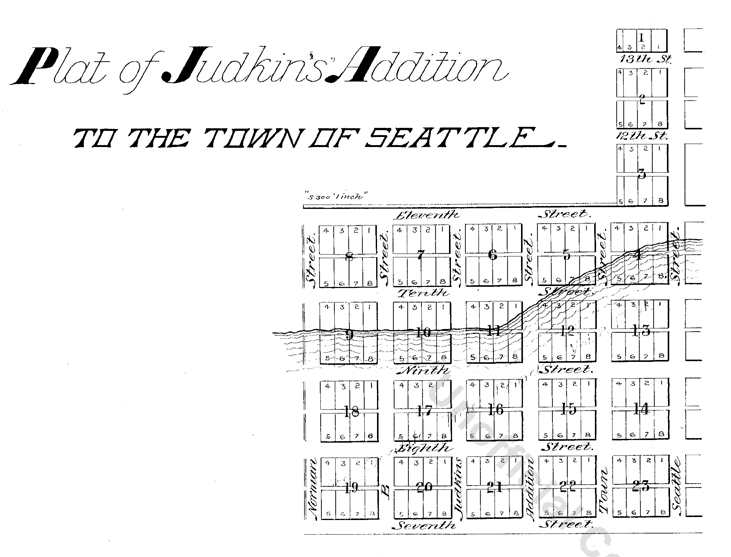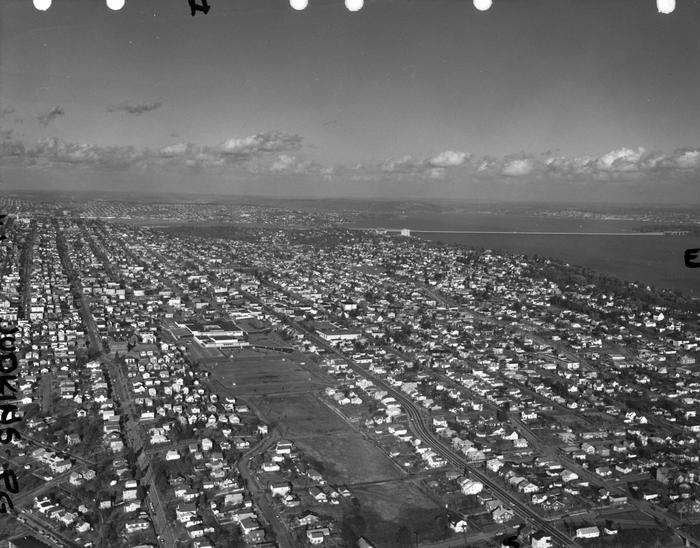S Judkins Street, like S Norman Street, S Addition Street, and SW Seattle Street, was named in the 1869 plat of Judkin’s (sic) Addition to the Town of Seattle, whose street names were, from north to south, Norman, B, Judkins, Addition, Town, and Seattle.

Because its original location is covered by King County Metro’s Atlantic Base and Interstate 5, Judkins Street now starts on Beacon Hill just west of 12th Avenue S and goes around 850 feet east to just east of 14th Avenue S, where it becomes a stairway to 15th Avenue S. The unimproved right-of-way continues through a greenbelt to 16th Avenue S, where there exists a 100-foot stretch of Judkins before it is stopped by Sturgus Avenue S, Daejon Park, and Interstate 90. On the other side of I-90, it resumes at 20th Avenue S and goes ⅘ of a mile east to Lake Washington Boulevard S, the last 50 or so feet being a stairway. Between Lake Washington Boulevard S and Lakeside Avenue S, only the first 150 feet is improved, mainly serving as a driveway for two houses. And east of Lakeside Avenue S there is a very short stretch that, like its neighbor to the north, S Norman Street, turns into a shoreline street end on Lake Washington — one of Leschi’s String of Pearls.
Judkins Street gives its name to Judkins Park and Playfield, which stretches for a number of blocks north of S Judkins Street and 22nd Avenue S, as far as Washington Middle School. The land between S Judkins Street and Interstate 90 through which the I-90 Trail winds (part of the Mountains to Sound Greenway) is also sometimes considered to be part of Judkins Park. The park, in turn, gives its name to the neighborhood of Judkins Park, and to the future Judkins Park station of Sound Transit’s Line 2 extension to the Eastside.
Built on the site of a former ravine landfill that was used for about four decades, Judkins Park was transferred to the parks department in the late 1940s and early 1950s, and opened to the public on October 8, 1977, according to a story in the October 6 issue of The Seattle Times.

Born and raised in Seattle, Benjamin Donguk Lukoff had his interest in local history kindled at the age of six, when his father bought him settler granddaughter Sophie Frye Bass’s Pig-Tail Days in Old Seattle at the gift shop of the Museum of History and Industry. He studied English, Russian, and linguistics at the University of Washington, and went on to earn his master’s in English linguistics from University College London. His book of rephotography, Seattle Then and Now, was published in 2010. An updated version came out in 2015.